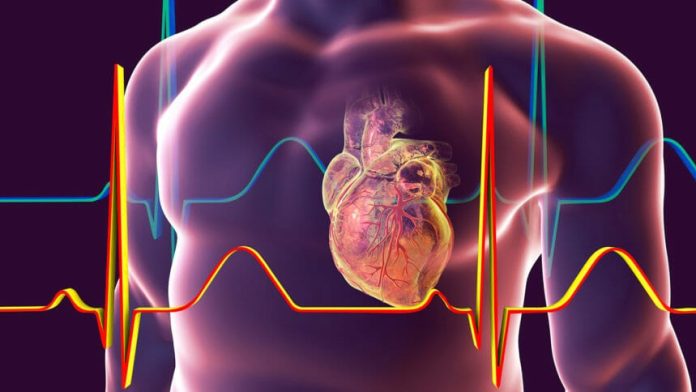New Drug Could “Un-Stiffen” Aging Hearts, Offering Hope for the Most Common Form of Heart Failure
A new experimental therapy helps restore the heart’s flexibility in models of stiffened heart failure.
Michael Gotthardt and his colleagues at the Max Delbrück Center are working with U.S. researchers to develop a new drug for a widespread form of heart failure that limits the heart’s ability to fill properly with blood. Their latest study, published in Cardiovascular Research, demonstrates that the experimental treatment can enhance heart performance in a mouse model designed to reflect the human condition.
As people grow older, their muscles naturally become less flexible, including the heart muscle. This loss of elasticity can lead to a form of heart failure in which the heart still pumps effectively but becomes too stiff to fully relax and refill between beats.
“There’s currently no effective medication that lowers mortality in this form of heart failure – heart failure with preserved ejection fraction, or HFpEF,” says Professor Michael Gotthardt, Group Leader of the Translational Cardiology and Functional Genomics lab at the Max Delbrück Center in Berlin.
Gotthardt has spent more than ten years studying the molecular roots of HFpEF and exploring ways to reverse the damage it causes.
In their recent publication, he and Professor Henk Granzier from the University of Arizona’s College of Medicine in Tucson, a long-term collaborator, describe how their new compound, RBM20-ASO, increases the heart muscle’s flexibility and improves blood filling in a mouse model that closely mimics the complex nature of human HFpEF.
“After treatment with RBM20-ASO, the mice’s hearts were markedly more compliant and capable of expanding and filling with blood after contracting,” Gotthardt explains.
Elastic forms of the protein titin
“Most people with HFpEF have comorbid conditions such as obesity, high blood pressure, elevated blood lipids or high blood sugar,” says Dr. Mei Methawasin, first author of the study who now leads her own group at the University of Missouri at Columbia. “For the first time, we tested the drug in mice that not only developed HFpEF, but also had these comorbidities – to better simulate the human disease.”
The drug is an antisense oligonucleotide (ASO) – a short, single-stranded nucleic acid molecule designed to reduce the amount, and therefore the activity, of the splicing regulator RBM20. This factor plays a critical role in determining whether heart muscle cells produce a more elastic or stiffer version of the giant protein titin, which functions as a molecular spring in cardiac muscle.
Gotthardt and colleagues had previously demonstrated that RBM20-ASO prompts heart cells to express more of the elastic titin variant – similar to what’s seen in very young hearts – completely reversing HFpEF-like symptoms in genetic animal models of the disease.
High doses not required
“The current study also aimed to determine the optimal dose of the drug to minimize side effects, including immune system disturbances,” says Methawasin. The team found that reducing RBM20 levels by about half was enough to improve the heart’s diastolic function – its ability to fill with blood – without impairing its pumping strength, or systolic function.
“Our treatment significantly reduced left ventricular stiffness and abnormal thickening of the heart muscle, even in the presence of persistent comorbidities,” adds Gotthardt. Moreover, side effects in treated animals were moderate. The researchers believe they can reduce these effects even further by increasing the dosing interval – an approach they plan to test in future studies.
“Our results suggest that using ASOs to modulate RBM20 protein levels could be a viable alternative or complementary therapy for HFpEF – one capable of restoring diastolic function and limiting further organ damage, either as a standalone or adjunctive treatment,” says Gotthardt.
Supported by the Deutsches Zentrum für Herz-Kreislauf-Forschung and the German Research Foundation, he is planning to bring this treatment to HFpEF patients in collaboration with colleagues from the Deutsches Herzzentrum der Charité in Berlin. Before clinical translation, however, the therapeutic strategy will undergo further evaluation in a porcine model to validate its safety and efficacy.











